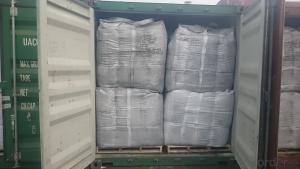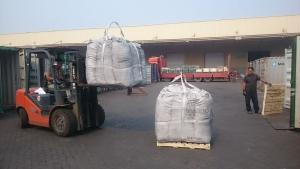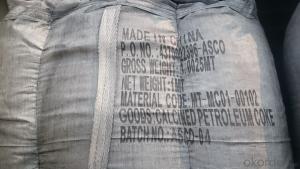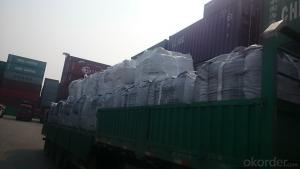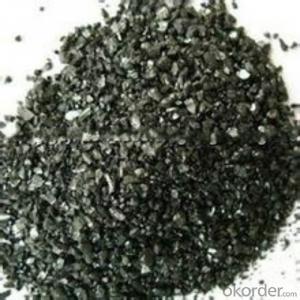GPC with lower Sulphur0.05% max in 1-5mm 90%min
- Loading Port:
- Tianjin
- Payment Terms:
- TT OR LC
- Min Order Qty:
- 22 m.t.
- Supply Capability:
- 5000 m.t./month
OKorder Service Pledge
OKorder Financial Service
You Might Also Like
Introduction:
GPC has good characteristics with low ash, low resistivity, low sulphur, high carbon and high density. It is the best material for high quality carbon products. It is used as carbon additive in steel industry or fuel.
Features:
1.Our strong team provide you reliable service that make you feel purchasing is more easier
2. We ensure that we can supply capability with competitive price.
3. Work strictly to guarantee product quality,
4. Highest standard of integrity. Guarantee customer's benefit.
5. Supplying Pet Coke, Met coke, Foundry Coke, Carbon Raiser etc.
Specifications:
F.C.% | 95MIN | 94MIN | 93MIN | 92MIN | 90MIN | 85MIN | 84MIN |
ASH % | 4MAX | 5MAX | 6 MAX | 6.5MAX | 8.5MAX | 12MAX | 13MAX |
V.M.% | 1 MAX | 1MAX | 1.0MAX | 1.5MAX | 1.5MAX | 3 MAX | 3 MAX |
SULFUR % | 0.3MAX | 0.3MAX | 0.3MAX | 0.35MAX | 0.35MAX | 0.5MAX | 0.5MAX |
MOISTURE % | 0.5MAX | 0.5MAX | 0.5MAX | 0.5MAX | 0.5MAX | 1MAX | 1MAX |
Pictures

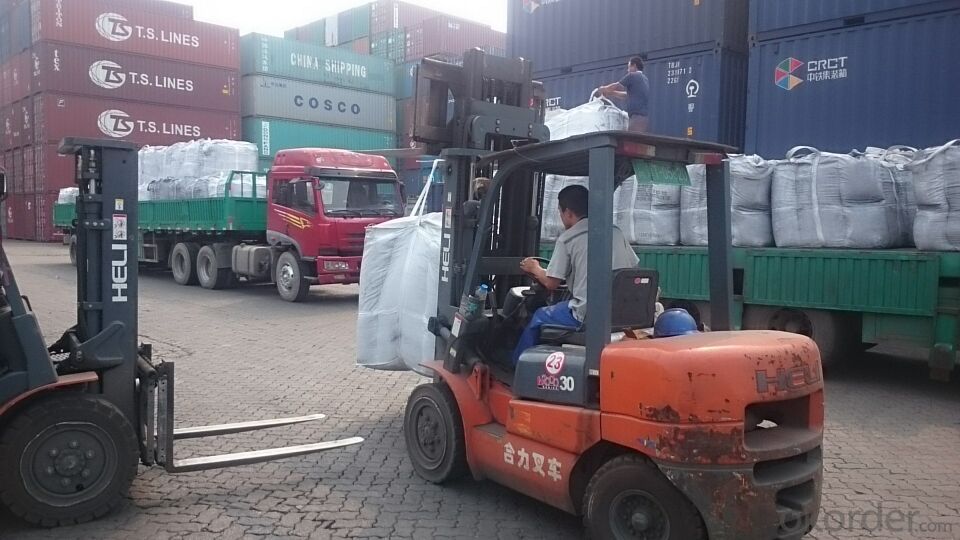
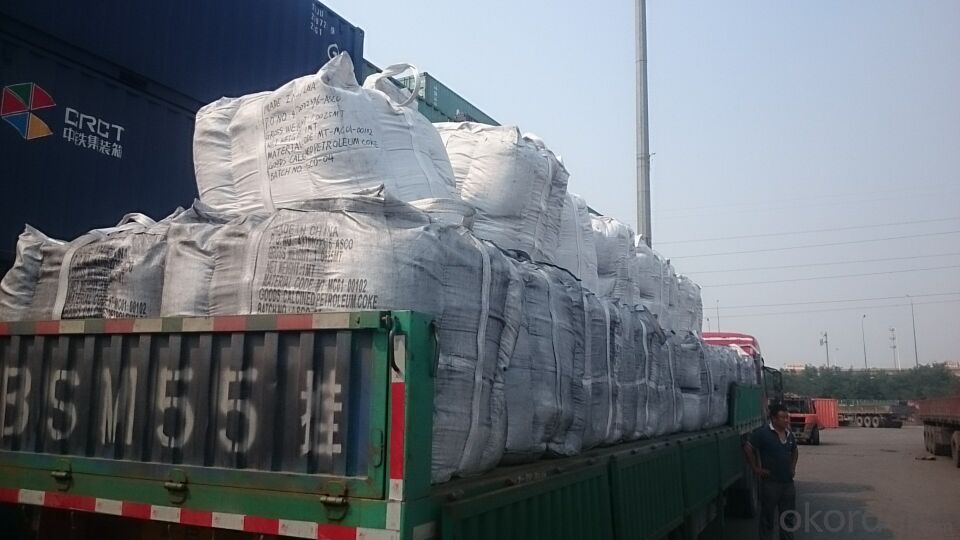
FAQ:
1. Your specification is not very suitable for us.
Please offer us specific indicators by TM or email. We will give you feedback as soon as possible.
2. When can I get the price?
We usually quote within 24 hours after getting your detailed requirements, like size, quantity etc. .
If it is an urgent order, you can call us directly.
3. Do you provide samples?
Yes, samples are available for you to check our quality.
Samples delivery time will be about 3-10 days.
4. What about the lead time for mass product?
The lead time is based on the quantity, about 7-15 days. For graphite product, apply Dual-use items license need about 15-20 working days.
5. What is your terms of delivery?
We accept FOB, CFR, CIF, EXW, etc. You can choose the most convenient way for you. Besides that,
we can also shipping by Air and Express.
6. Product packaging?
We are packed in bulk ship or in ton bag or placing in container or according to your requirements.
7. Notice
please note that the price on Alibaba is a rough price. The actual price will depends on raw materials, exchange rate wage and your order quantity .Hope to cooperation with you, thanks !
- Q: What are the 3K, 12K, UD, etc. in the appearance requirements of the carbon fiber bicycle? What's the difference?
- 3K 12K UD refers to the pattern of carbon fiber thickness, 3K pattern is the smallest of the above lattice minimum.The higher the number of K, the more tedious the process, the more expensive the cost, but unfortunately, the performance of large pieces of no help, just to meet psychological needs. The smaller the carbon fiber object, the smaller the grid, so that the force is better. The carbon fiber component of the remote control helicopter is the 3K pattern. My 12K version is on ArchitectureThere are some people say: UD carbon cloth is like carbon cloth, and there is a gap between the strength of carbon cloth, 3K carbon cloth is made of 3 thousand carbon fiber woven cloth, UD imitation carbon cloth is formed in parallel with carbon fiber tile free carbon cloth, and then cut into UD imitation carbon cloth needs finally, to make the same width, Zhumie into UD.
- Q: What is carbon offsetting in aviation?
- Carbon offsetting in aviation refers to the practice of compensating for the greenhouse gas emissions produced by aircraft by investing in projects that reduce or remove an equivalent amount of carbon dioxide from the atmosphere. This voluntary measure aims to mitigate the environmental impact of air travel by supporting initiatives such as renewable energy projects or reforestation efforts.
- Q: Want advanced reinforcement, but I do not know where the high furnace rock carbon, looking for someone to guide...
- Before the mall has sold, now you can see
- Q: How does carbon affect the growth of plants?
- Carbon is essential for plant growth as it is a key component of carbohydrates, proteins, and other organic compounds that are vital for plant structure and function. Through the process of photosynthesis, plants absorb carbon dioxide from the atmosphere and convert it into glucose, which provides energy for growth and development. Carbon also plays a crucial role in regulating plant water uptake and nutrient absorption. In summary, carbon is indispensable for the growth and overall health of plants.
- Q: How does carbon dioxide contribute to ocean acidification?
- Carbon dioxide contributes to ocean acidification by dissolving in seawater and forming carbonic acid. This increase in acidity prevents the normal growth and development of shell-forming organisms such as corals, oysters, and certain plankton species. It also affects the balance of calcium carbonate in the water, making it more difficult for these organisms to build and maintain their shells or skeletons. Overall, the increasing levels of carbon dioxide in the atmosphere lead to the acidification of the oceans, causing detrimental impacts on marine ecosystems and biodiversity.
- Q: What is the greenhouse effect?
- Certain gases in the Earth's atmosphere naturally trap heat from the sun, preventing it from escaping back into space. These gases, like carbon dioxide (CO2), methane (CH4), and water vapor, act as a blanket, allowing sunlight to pass through but trapping the heat radiated from the Earth's surface. This process is vital for the Earth's survival as it helps maintain a relatively stable and livable temperature range. Without the greenhouse effect, the Earth's average temperature would be much colder, rendering it uninhabitable for most forms of life. However, human activities such as burning fossil fuels, deforestation, and industrial processes have significantly increased the concentration of greenhouse gases in the atmosphere. This excessive amount of greenhouse gases intensifies the greenhouse effect, leading to global warming. Global warming refers to the gradual increase in the Earth's average temperature, primarily caused by human-induced emissions of greenhouse gases. This temperature rise has far-reaching consequences, including the melting of ice caps, rising sea levels, extreme weather events, and disruption of ecosystems. While the greenhouse effect itself is a natural and necessary process, the enhanced greenhouse effect resulting from human activities contributes to climate change. Therefore, it is crucial to reduce greenhouse gas emissions and adopt sustainable practices to mitigate the adverse effects of global warming.
- Q: What are the consequences of increased carbon emissions on political stability?
- Increased carbon emissions can have significant consequences on political stability. One of the main consequences is the exacerbation of environmental challenges and natural disasters. As carbon emissions contribute to global warming, the frequency and intensity of extreme weather events such as hurricanes, droughts, and flooding increase. These disasters can lead to displacement of communities, destruction of infrastructure, and loss of lives, all of which can have a destabilizing effect on societies. Moreover, the economic impact of increased carbon emissions can also create political instability. As climate change affects agriculture, water resources, and energy production, it can lead to economic disturbances, unemployment, and rising food prices. These economic hardships can fuel social unrest, protests, and even conflicts, particularly in countries that heavily rely on these sectors for their livelihoods. Additionally, the consequences of increased carbon emissions can exacerbate existing social and political tensions. Climate change often disproportionately affects vulnerable populations, such as communities in developing countries or marginalized groups. This inequality can aggravate social inequalities, increase social unrest, and lead to political instability as marginalized communities demand action and justice. Furthermore, the global nature of climate change necessitates international cooperation and agreements to effectively address the issue. However, increased carbon emissions can strain diplomatic relations, particularly between countries that have differing views on climate action. Disagreements over carbon reduction targets, carbon trading mechanisms, and financial contributions can lead to diplomatic tensions and hinder global cooperation, which may consequently impact political stability. In conclusion, increased carbon emissions have far-reaching consequences on political stability. From environmental challenges and natural disasters to economic disturbances and social tensions, the consequences of carbon emissions can strain societies and governments. To ensure political stability, it is imperative that global efforts are made to reduce carbon emissions and mitigate the impacts of climate change.
- Q: How is carbon used in the production of graphite?
- The production of graphite relies heavily on carbon, which undergoes extreme heat and pressure to form its distinctive crystalline structure. The process commences with a high-quality carbon source, like petroleum coke or coal tar pitch, which is heated to eliminate impurities and transform it into pure coke. This coke is then ground into a fine powder and combined with a binder, typically pitch, to create a paste. The paste is molded into the desired shape, such as rods or blocks, and exposed to high temperatures in a furnace. The heat prompts the decomposition of the binder and the rearrangement of carbon atoms into hexagonal layers, characteristic of graphite. The furnace's high pressure aids in aligning the carbon layers, resulting in the formation of graphite crystals. Following the furnace process, the graphite undergoes further purification through treatments like chemical washing and acid leaching to eliminate any remaining impurities. Ultimately, the purified graphite is shaped into the final product, such as pencils, electrodes, or lubricants, using techniques like extrusion or machining. To summarize, the production of graphite involves subjecting a carbon source to high temperatures and pressures, leading to the creation of graphite crystals with its unique layered structure. This process enables the manufacturing of diverse graphite products, widely utilized in industries such as manufacturing, electronics, and energy.
- Q: How does carbon dioxide affect the growth of marine organisms?
- Carbon dioxide affects the growth of marine organisms in several ways. Firstly, increased levels of carbon dioxide in the ocean can lower the pH, leading to ocean acidification. This change in acidity can have detrimental effects on the growth and development of marine organisms, especially those with calcium carbonate shells or skeletons, such as corals, mollusks, and some plankton species. High levels of carbon dioxide can hinder the ability of these organisms to build and maintain their structures, making them more vulnerable to predation and impacting their overall growth and survival. Furthermore, increased carbon dioxide levels can also affect the physiology and metabolism of marine organisms. Some studies have shown that high levels of carbon dioxide can disrupt the functioning of enzymes responsible for various biological processes, including growth and reproduction. This can lead to reduced growth rates, impaired reproductive success, and overall decreased fitness of marine organisms. Additionally, elevated carbon dioxide levels can also indirectly affect marine organisms by altering the availability and distribution of other important nutrients and resources. For example, increased carbon dioxide can influence the solubility of minerals and trace elements, affecting their bioavailability to marine organisms. This can disrupt nutrient cycling and limit the availability of essential nutrients necessary for growth and development. Overall, the increase in carbon dioxide levels due to human activities can have significant negative impacts on the growth and development of marine organisms. These impacts can disrupt entire marine ecosystems, with potentially serious consequences for biodiversity and the functioning of these ecosystems.
- Q: How to distinguish carbon rods to identify carbon fishing rods?
- I'm also waiting to learn! It seems all very busy, the masters are not on-line
Send your message to us
GPC with lower Sulphur0.05% max in 1-5mm 90%min
- Loading Port:
- Tianjin
- Payment Terms:
- TT OR LC
- Min Order Qty:
- 22 m.t.
- Supply Capability:
- 5000 m.t./month
OKorder Service Pledge
OKorder Financial Service
Similar products
Hot products
Hot Searches
